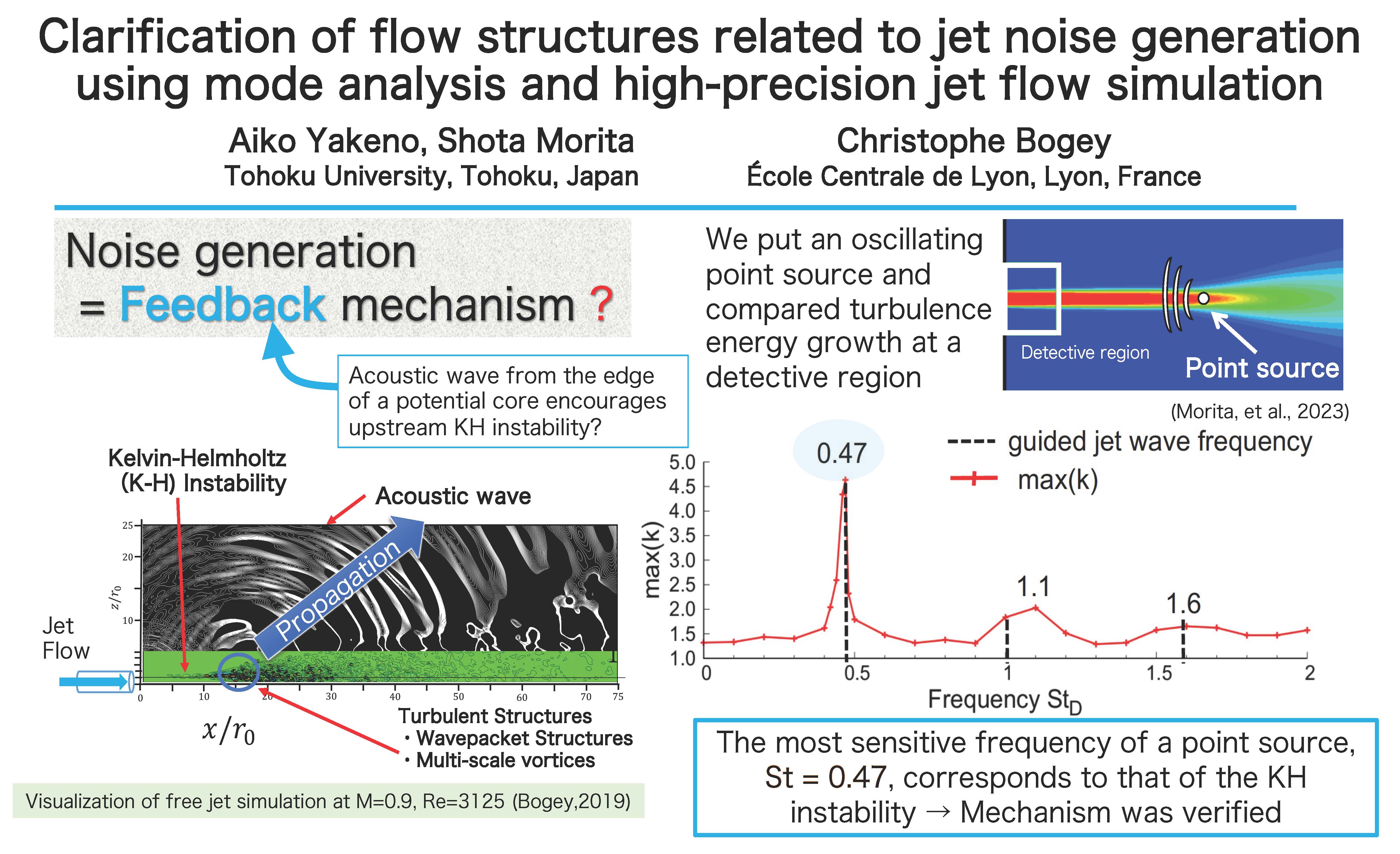共同研究プロジェクト
- Active Control of Protein Mass Transfer by Membranes with Various Pore Patterns
- Shape estimation of pipe inner corrosion based on ultrasonic reflection
- Investigation of a predictive therapeutic response under controlled oxygen condition in cancer patient-derived organoids
- Experimental study of new model electroactive materials (TEmPuRA)
- Nonlinear Bifurcation and Dynamic Mode decomposition for Taylor Vortex in Gap between Rotating Two Cylinders/Cones
- Monitoring eukaryotic cell functions under various hypoxic conditions with microfluidic differential oxygenators
- Finsler geometry modeling of skyrmions geometrically confined in nanodots: stability and morphology under stresses
- Numerical Study on Electrical Drift and Diffusion of Ions in Polymer Strips
- Mass Transfer Enhancement and Control by using Ultrasound Induced Flow
- Coupled Analysis Approach to Integrated Multiphase Energy Systems
- Multiscale simulation of Carbon electromigration in iron
- Recipe of polymer coating by cold spray
- Epoxy polymer for ammonia storage solutions
- Clarification of flow structures related to jet noise generation using mode analysis and high-precision jet flow simulation
-
Active Control of Protein Mass Transfer by Membranes with Various Pore Patterns
Atsuki KOMIYA
Institute of Fluid Science, Tohoku University -
Shape estimation of pipe inner corrosion based on ultrasonic reflection
Hiroyuki NAKAMOTO
Kobe UniversityAn ultrasonic inspection probe generates plane and spherical waves into a pipe wall. This study investigated the effect of the spherical wave on the wave signal reflected from a rough surface. The numerical calculation results showed the same tendency as the experimental data.
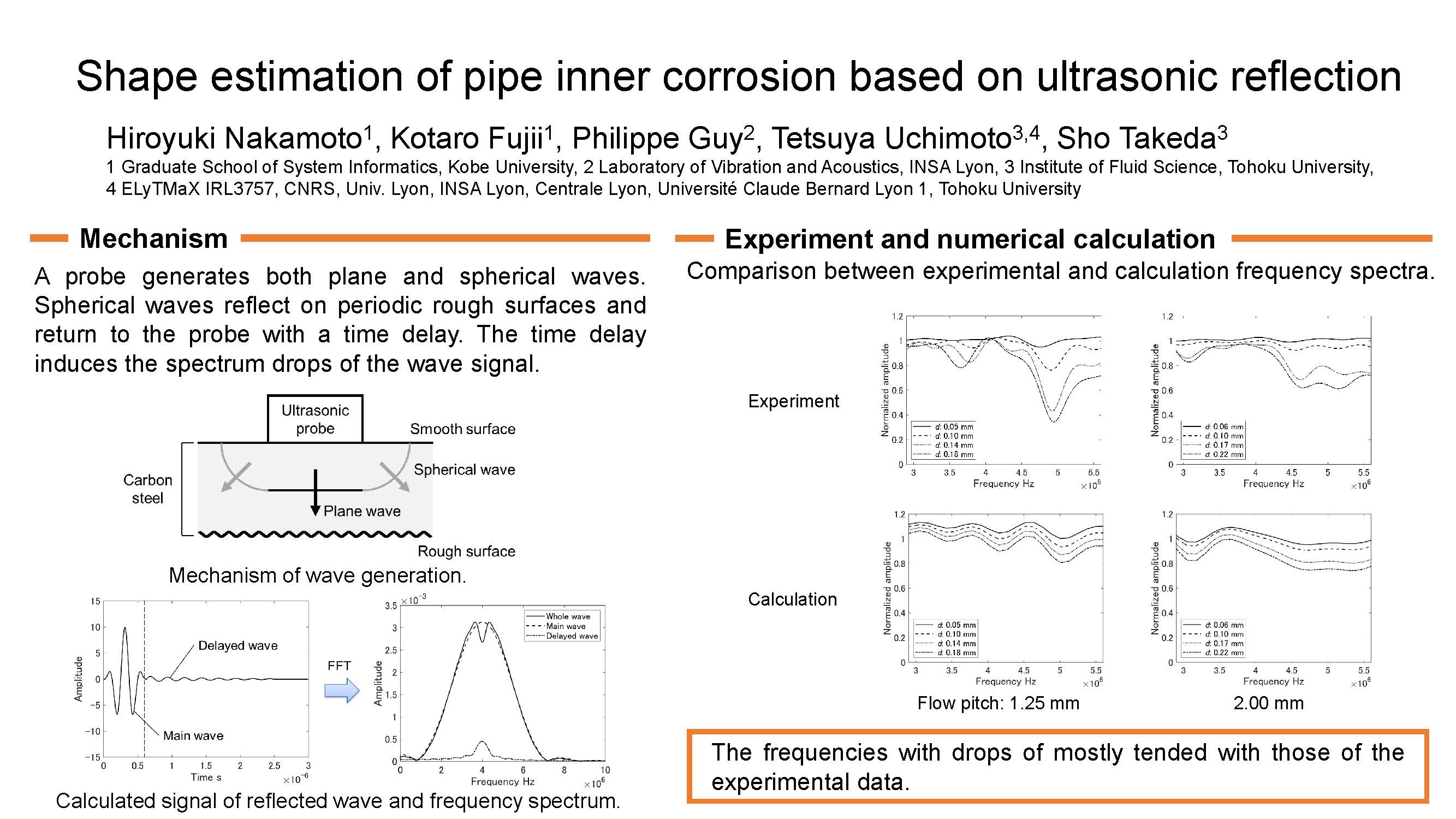
-
Investigation of a predictive therapeutic response under controlled oxygen condition in cancer patient-derived organoids
Nicolas AZNAR
Cancer Research Center of LyonCancer stem cells (CSCs) located in severe regions of a tumor, where nutrient and oxygen (O2) accessibility is low, constitute a key medical issue. Due to their high plasticity, CSCs are extremely resistant to conventional therapy and responsible for the recurrence of the disease in patients. Therefore, identifying mechanisms that regulate cancer cell plasticity and targeting those CSCs is a prerequisite to open novel therapeutic avenues. The main goal of this project is to study how O2 levels affect CSC plasticity and their response to anti-cancer therapies.
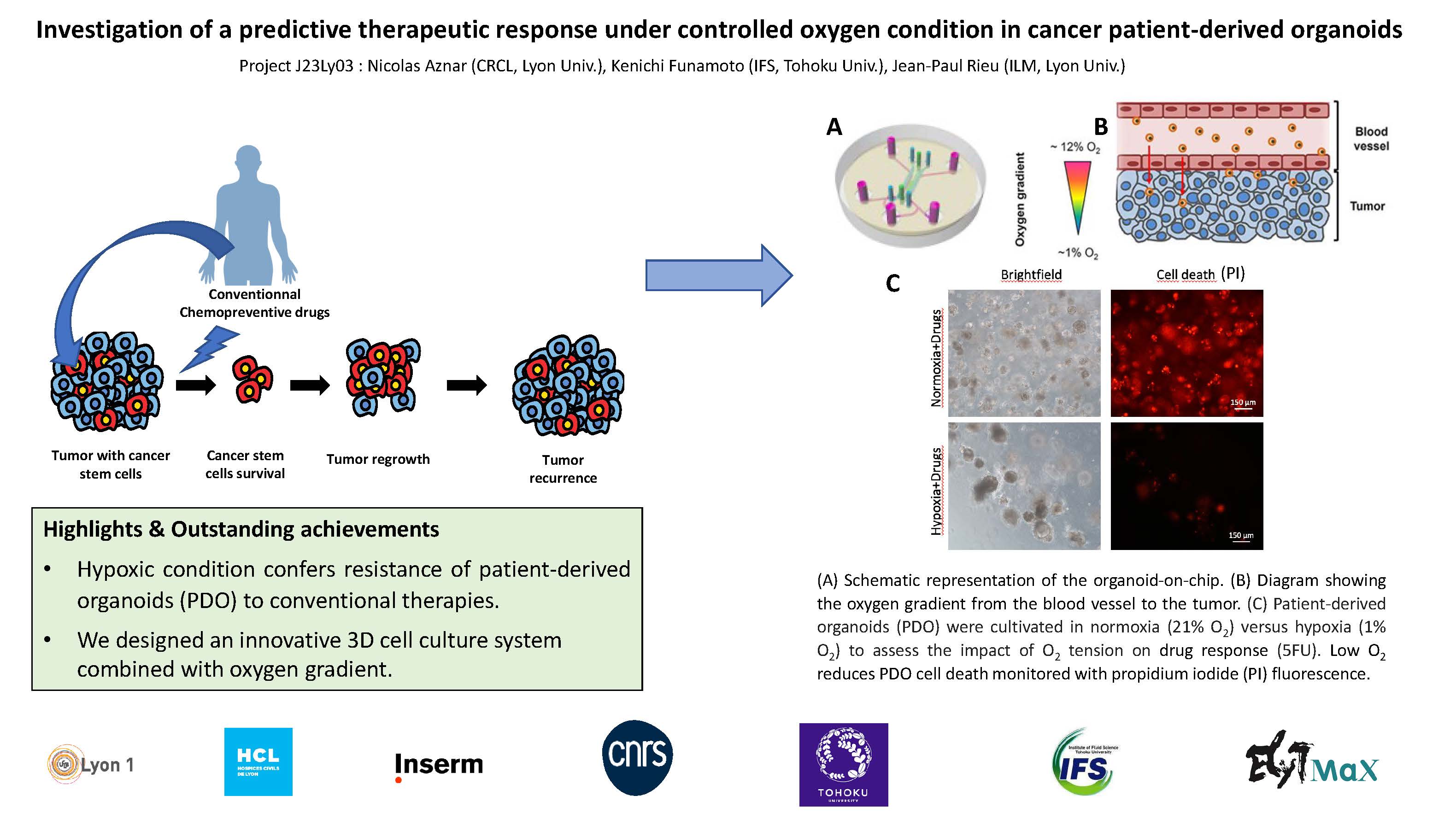
-
Experimental study of new model electroactive materials (TEmPuRA)
Gildas COATIVY
INSA LyonEpoxy-amine materials doped with 0.1 to 10% by weight of BMIM-TFSI (IL ionic liquid) were developed. Our results show that ionic conductivity increases linearly with the addition of IL over the range tested. Bending tests show an increase in displacement and current density when the fraction of IL is increased.
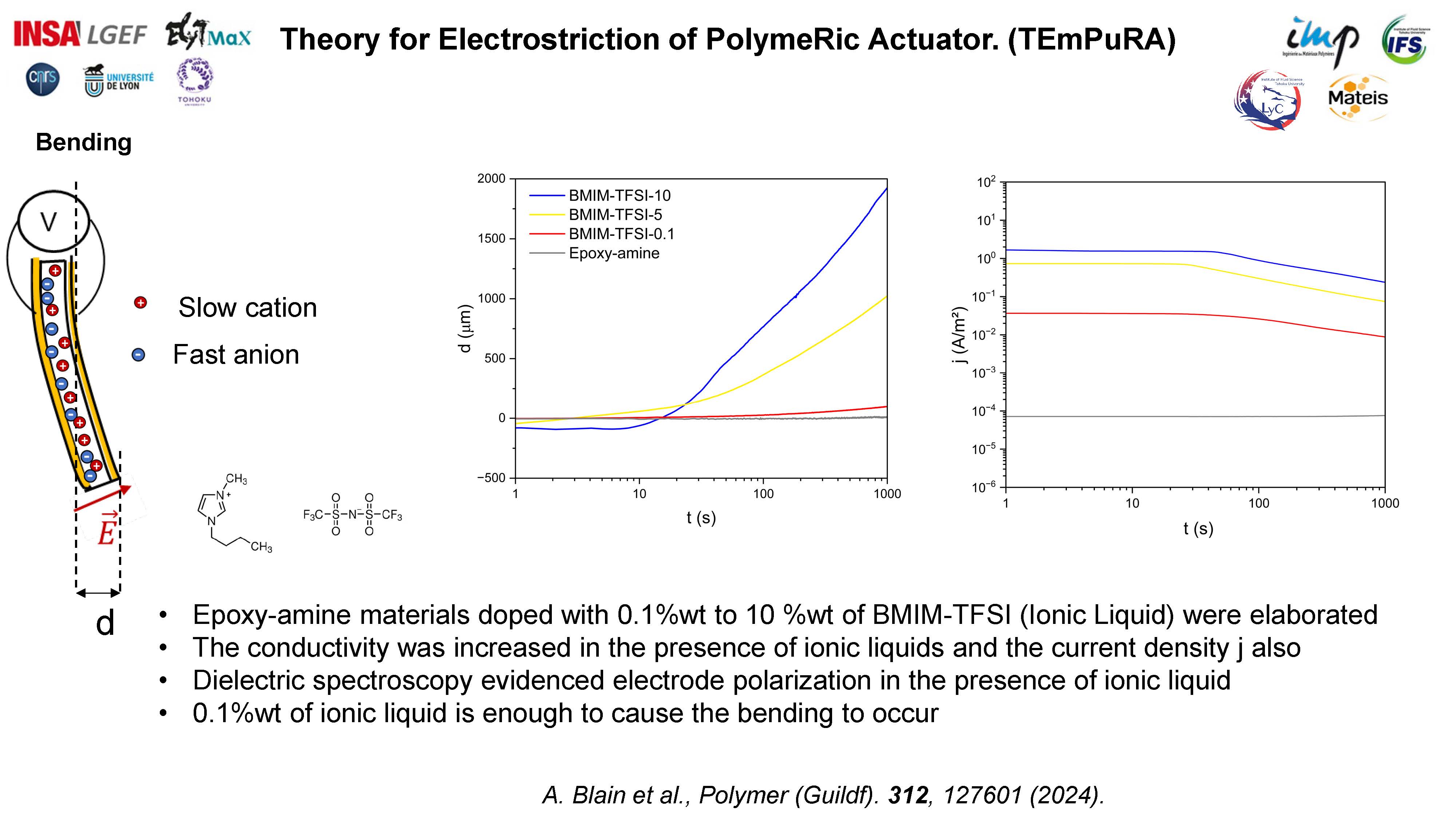
-
Nonlinear Bifurcation and Dynamic Mode decomposition for Taylor Vortex in Gap between Rotating Two Cylinders/Cones
Takahiro ADACHI
Akita UniversityIn this study, linear stability and nonlinear bifurcation theory was conducted to clarify the critical conditions under which the vortex patterns in a concentric ouble cylinder undergoes a transition. In addition, we applied DMD to the simulation results to compare with the results from stability theory.
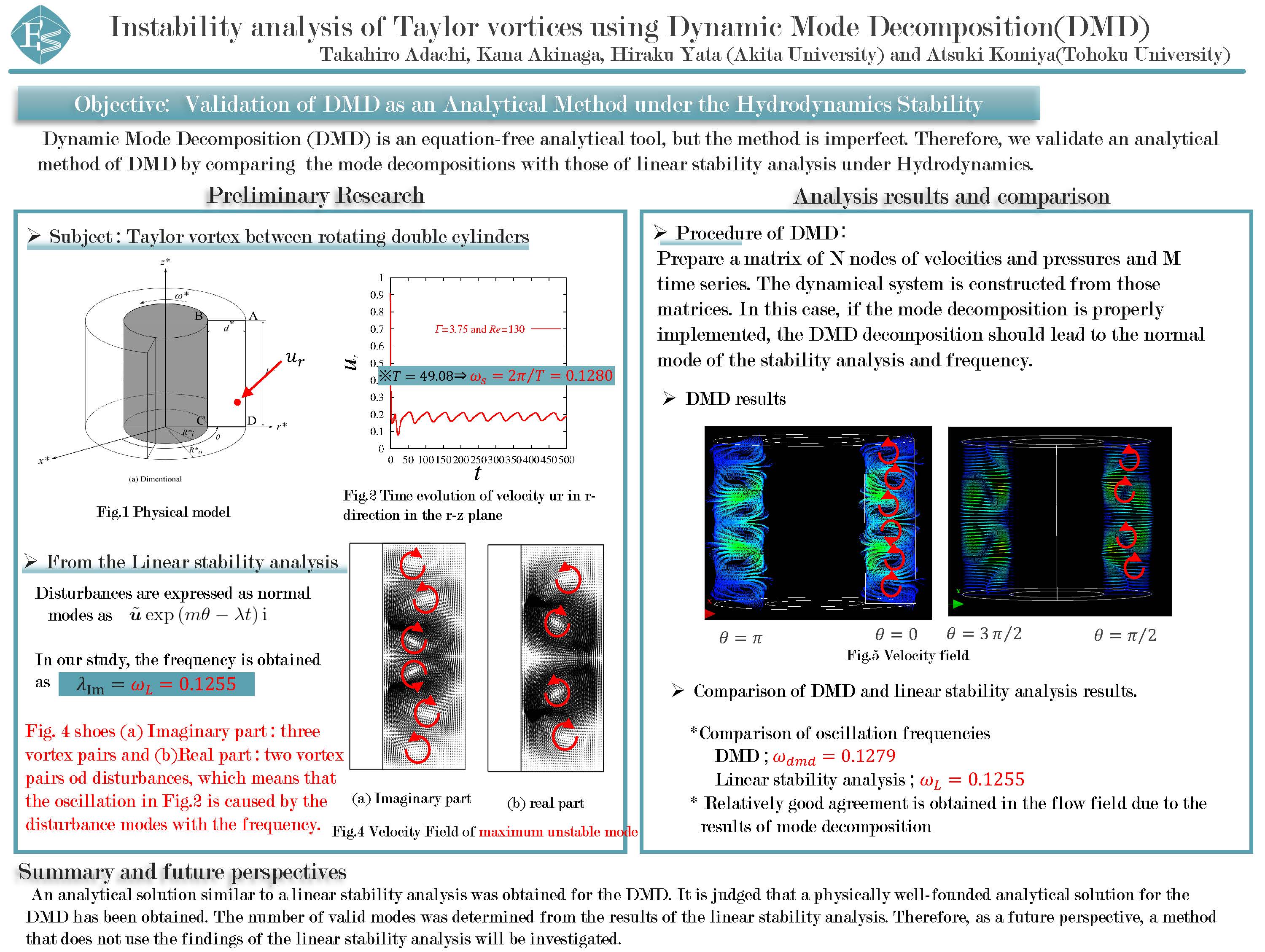
-
Monitoring eukaryotic cell functions under various hypoxic conditions with microfluidic differential oxygenators
Jean-Paul RIEU
University Claude Bernard Lyon 1We develop microfluidic tools to study the aerotaxis of various eukaryotic cells. The aerotactic response of the asocial amoeba Acanthamoeba measured with a double-layer device is stronger than the response of Dictyostelium (previous results). A new device offering complementary functions, where oxygen level is controlled by gas permeation through the porous PDMS, has been tested.
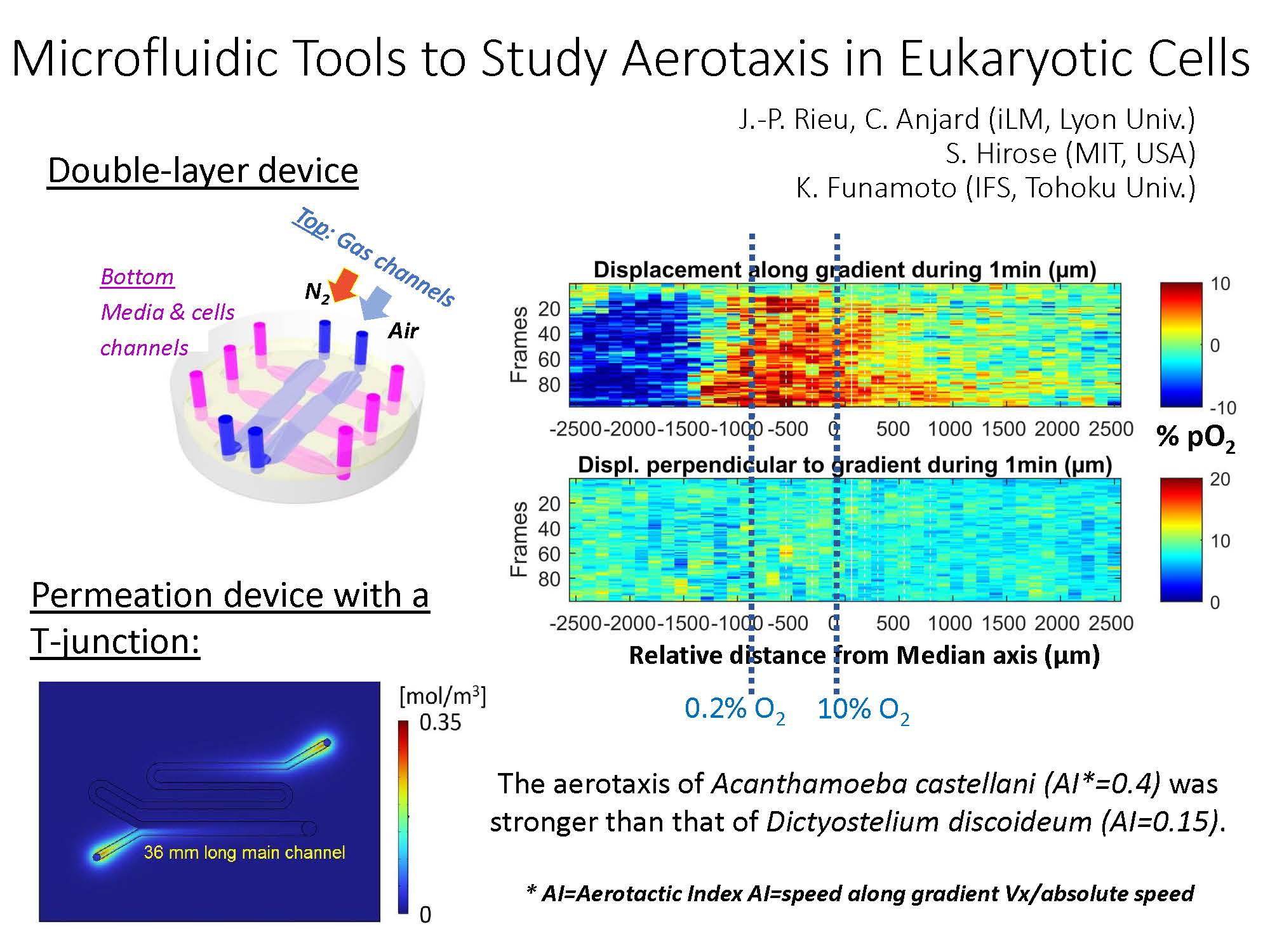
-
Finsler geometry modeling of skyrmions geometrically confined in nanodots: stability and morphology under stresses
Fumitake KATO
National Institute of Technology, Ibaraki CollegeThe stability and morphology of geometrically confined skyrmions in nanodots are numerically studied using the Finsler geometry modeling technique. Our numerical results indicate that the dynamically enhanced geometric confinement effect and dynamical anisotropy reflected in the coupling constants suitably explain the skyrmion stability on nanodots under radial stresses with zero magnetic field.
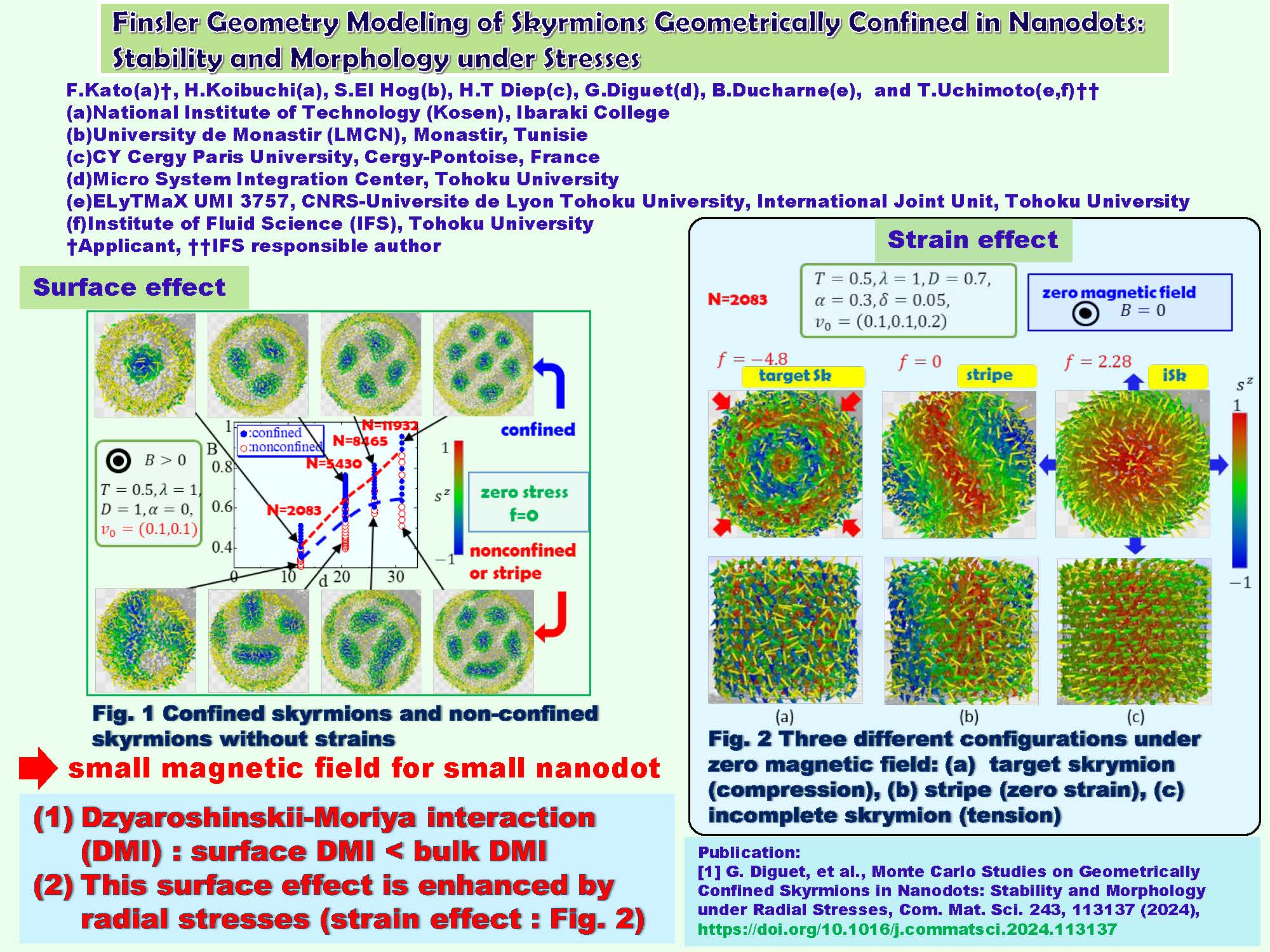
-
Numerical Study on Electrical Drift and Diffusion of Ions in Polymer Strips
Joel COURBON
INSA LyonThe ion flow in solid polymer of anions and slightly slower cations under various high values of electric field is modeled. The resulting charge distribution kinetics is given as a input into a Comsol to clarify the polymer sheet bending kinetics, while the resulting through-thickness current density decay with time matches fairly well the experimental results.
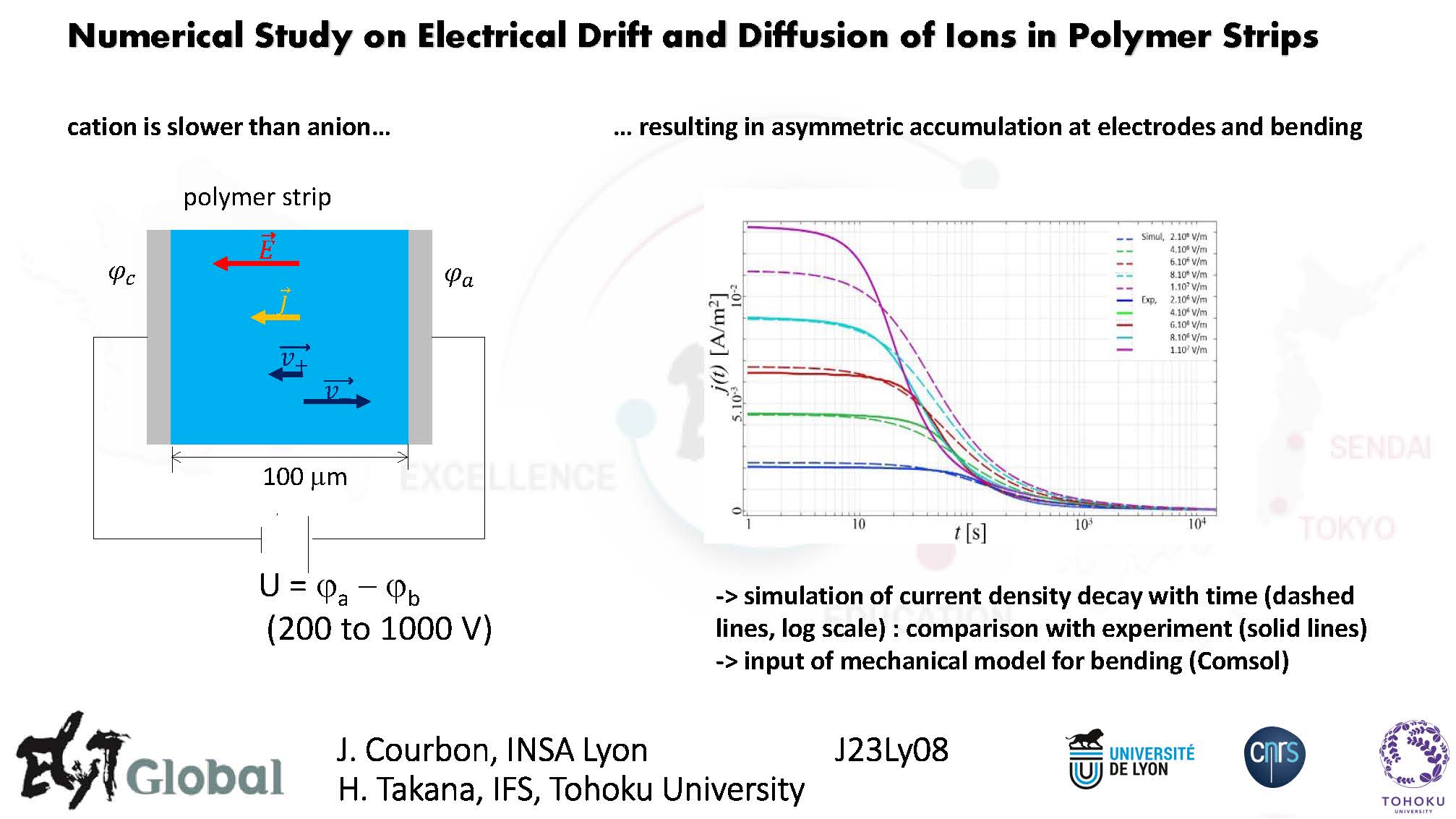
-
Mass Transfer Enhancement and Control by using Ultrasound Induced Flow
Atsuki KOMIYA
Institute of Fluid Science, Tohoku UniversityThis collaborative research focuses on the precise control of mass transfer. Porous membranes and ultrasound generator are used to promote and control mass transfer of several proteins. Numerical calculations will be used to clarify the relationship between specifications of the porous membranes, ultrasound-induced flow and mass flux.
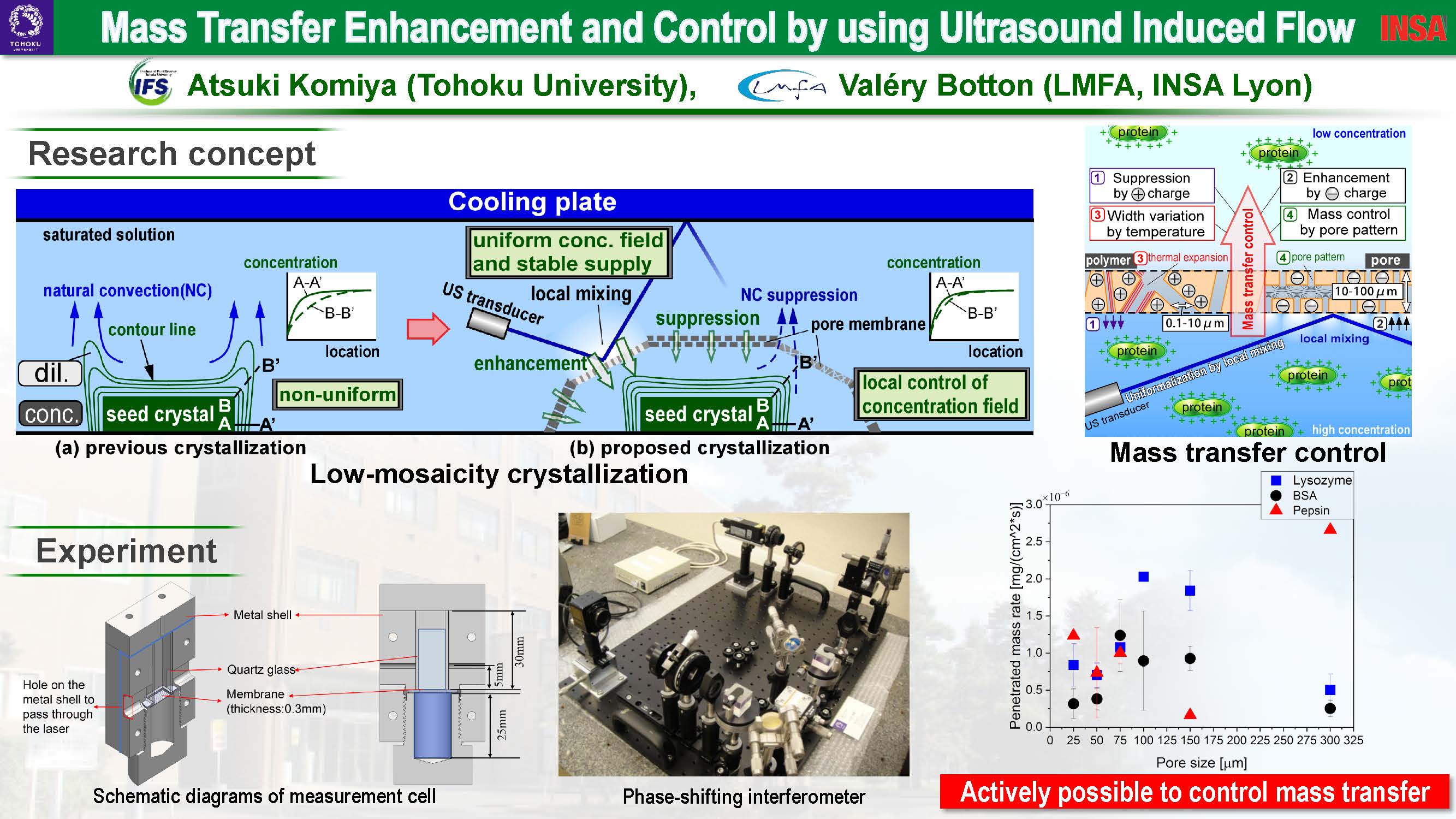
-
Coupled Analysis Approach to Integrated Multiphase Energy Systems
Jun ISHIMOTO
Institute of Fluid Science, Tohoku University -
Multiscale simulation of Carbon electromigration in iron
Takashi TOKUMASU
Institute of Fluid Science, Tohoku UniversityMolecular dynamics simulations are performed to analyze the electric field dependence of electromigration in Fe-C alloy. Firstly, the diffusion coefficient of carbon atoms was calculated. Next, the analysis of the drift velocity of carbon atoms in the direction of the electric field was performed. These results showed that electric fields may affect the diffusion coefficient of carbon.
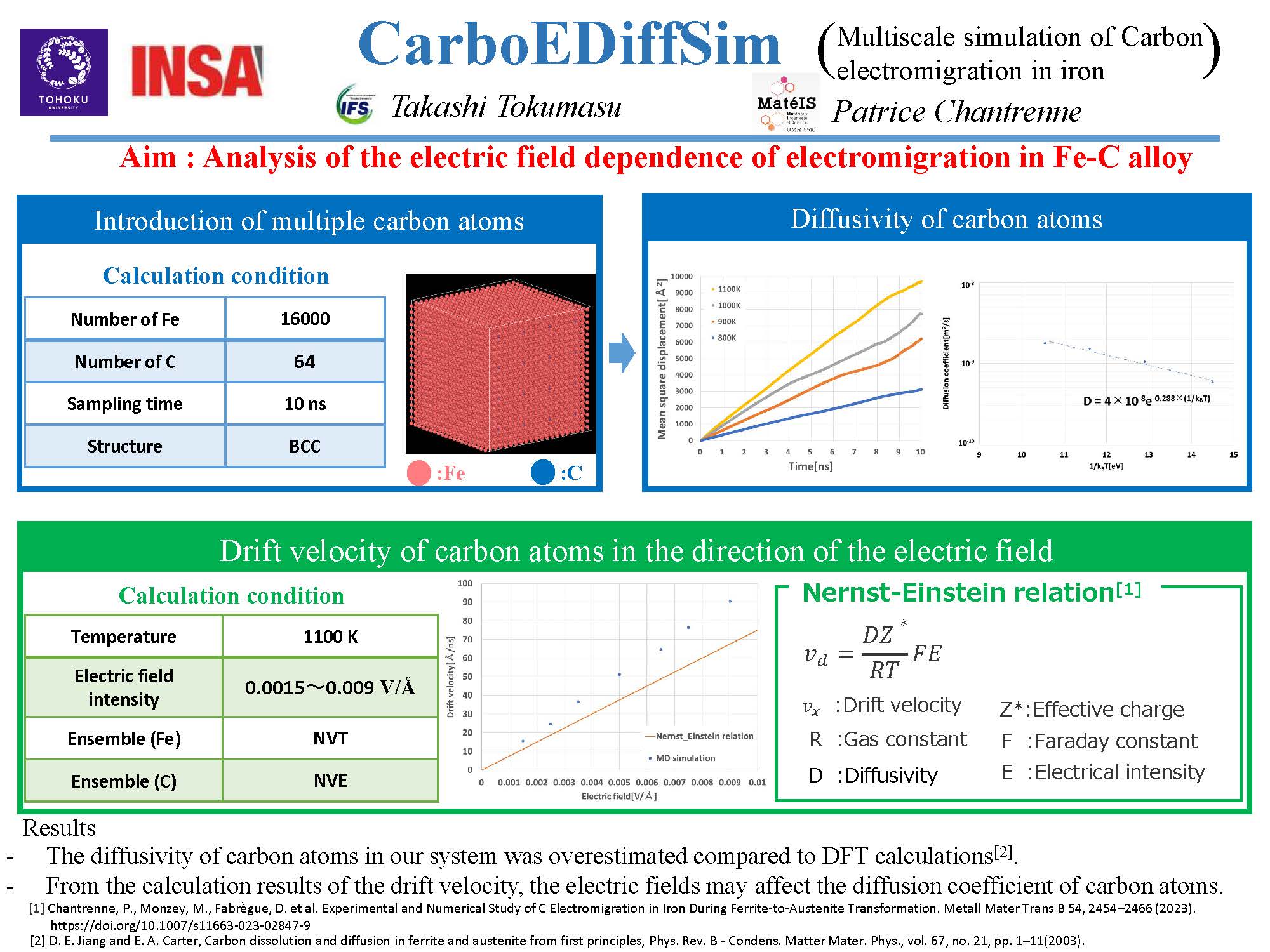
-
Recipe of polymer coating by cold spray
Chrystelle BERNARD
Frontier Research Institute for Interdisciplinary Sciences, Tohoku UniversityDuring the cold spray process, the gas accelerates and heats the particles. Knowledge of the particle history during its flight is of a primordial importance for better understanding of the particle impact, in particular for polymers as temperature sensitive materials with highly strain rate. First results showed that successful adhesion of polymer particles onto a metallic substrate is a combination of different factors: the ratio between the substrate roughness and the particle size, the particles’ velocity and temperature at the nozzle exit, and the microstructural state of the particles. Further investigations are needed to confirm these assumptions.
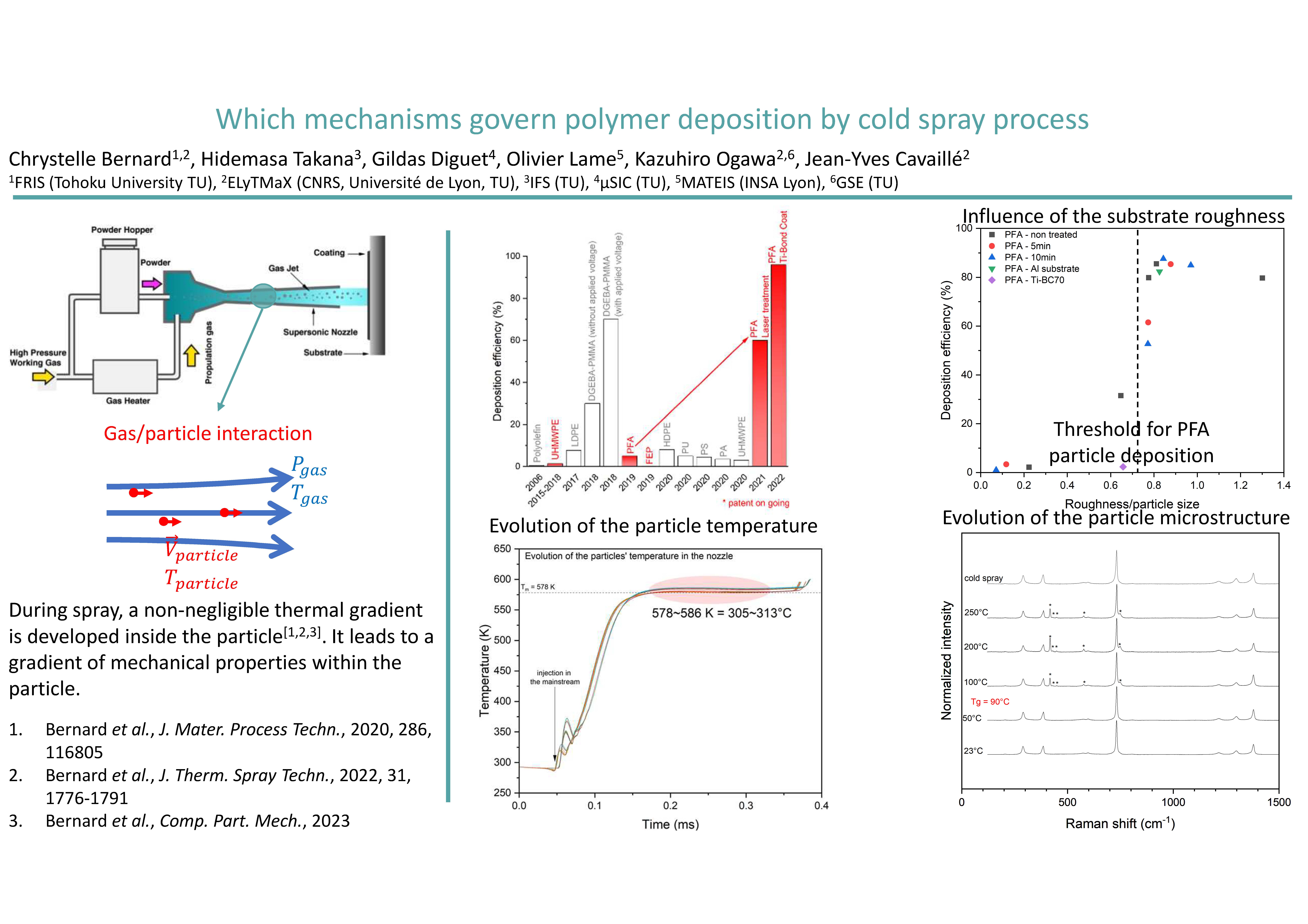
-
Epoxy polymer for ammonia storage solutions
Nicolas MARY
INSA Lyon -
Clarification of flow structures related to jet noise generation using mode analysis and high-precision jet flow simulation
Aiko YAKENO
Institute of Fluid Science, Tohoku UniversityA feedback mechanism has been believed to exist only in impinging flows and supersonic jets, however we have confirmed that in subsonic jets. We tested by installing a local body force oscillating at the end of the potential core and confirmed its sensitivity to the amplification of turbulent energy in the upstream detective region. As a result, the most sensitive frequency coincided with the KH instability in upstream, indicating the existence of a feedback mechanism in subsonic jets.
